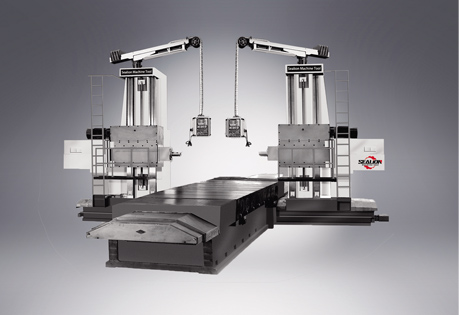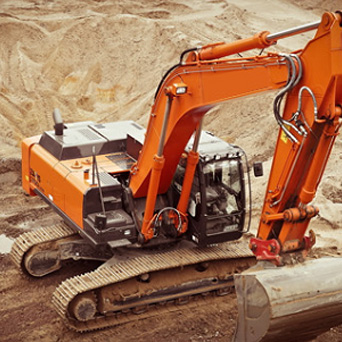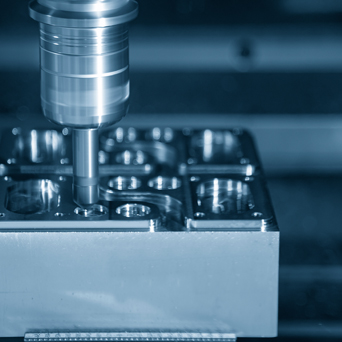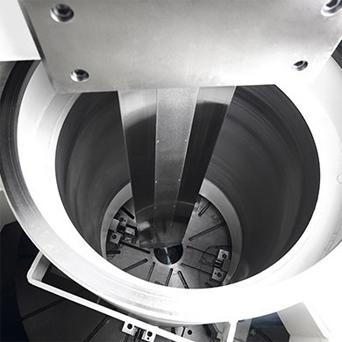The Structure and the Function of the CNC Milling Machine
The CNC milling machine has multiple functions of a milling machine, a boring machine, and a drilling machine, so its process is highly concentrated. When the workpiece is replaced, only the processing program, clamping tool and adjustment tool data stored in the CNC device, so the production cycle is greatly shortened and the production efficiency is improved.
There are various forms of CNC milling machines. Although different types of CNC milling machines are different in composition, they have many similarities. A typical CNC milling machine is divided into six parts, namely machine body, milling head, worktable, horizontal infeed part, lifting platform and cutting oil cooling system. Here is a brief introduction to the structure and the function of the CNC milling machine:
1. Machine body
The internal reinforcement ribs of the machine body are reasonably arranged and have good rigidity. There are four adjusting bolts on the base to facilitate the level adjustment of the machine tool. The cutting oil pool is arranged inside the bed.
2. Milling head part
The milling head part is composed of two parts: a stepped gearbox and a milling head. The milling head spindle is supported on high-precision bearings to ensure that the spindle has high rotation accuracy and good rigidity. The main shaft is equipped with fast-acting cluster cutter nuts, adopts mechanical stepless speed change, wide adjustment range, stable transmission and convenient operation. The braking mechanism can quickly brake the main shaft, saving auxiliary time. When braking, it needs to use the brake handle to open the stop ring to make the spindle brake immediately. When starting the main motor, we should pay attention to loosening the spindle brake handle. The milling head component is also equipped with a servo motor, an internal toothed belt wheel, a ball screw pair and a spindle sleeve, which forms a vertical feed transmission chain to make the spindle move linearly in the vertical direction.
3. Workbench
The working table and the bed saddle are supported on the wide horizontal guide rail of the lifting table. The longitudinal feed of the worktable is driven by a servo motor installed at the right end of the worktable, and the precision ball screw pair is driven by the internally toothed belt wheel, so that the worktable can obtain longitudinal feed. The left end of the worktable is equipped with a hand wheel and a dial for manual operation of the feed, which improves the wear resistance of the guide rail, the smoothness of movement and the retention of precision, and eliminates the phenomenon of low-speed crawling.
4. Horizontal infeed part
An AC servo motor is installed in front of the lifting platform to drive the saddle for lateral feed movement. Its working principle is the same as the longitudinal feed of the worktable. In addition, a feed handwheel is installed at the front end of the horizontal ball screw to realize manual feed.
5. Lifting platform
There is a locking handle on its left side, and a long handle on its front end can drive the bevel gear and the lifting table screw to rotate, thereby obtaining the lifting movement of the lifting table.
6. Cutting oil cooling system
The cooling part is composed of cutting oil pump, oil outlet pipe, oil return pipe, switch and nozzle. The cutting oil pump is installed in the inner cavity of the base of the machine tool. It pumps the cutting oil from the oil reservoir to the oil outlet pipe, and then sprays it through the nozzle to cool the cutting area. The lubrication part adopts the motorized lubrication method to lubricate the spindle sleeve, the guide rail and the ball screw through the oil separator to improve the service life of the machine tool.
The CNC milling machine has undergone great changes in the overall layout, appearance, transmission system, structure of the tool system, and operating mechanism. The purpose of these changes is to meet the requirements of CNC milling machines and gives full play to the characteristics of CNC milling machines.
-

Enhancing Productivity and Efficiency with New Floor Type Boring Milling Machines
In today's competitive manufacturing industry, companies are continually striving to enhance productivity and efficiency to stay ahead of the curve. One of the key factors in achieving these goals... -

The Skill of Choosing Lathe Factory
1. Reasonably determine the function of CNC machine toolsWhen selecting the function, we should choose the numerical control machine tool according to the specification, scale and precision of the pro... -

Characteristics of Chinese CNC Lathe
Today, cnc lathe machine China has the following characteristics.The core CNC technology is more intelligent. It is reported that in the new industrial exhibition, the intelligent control system of CN...





